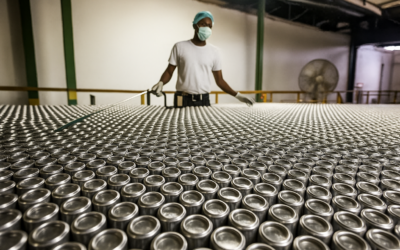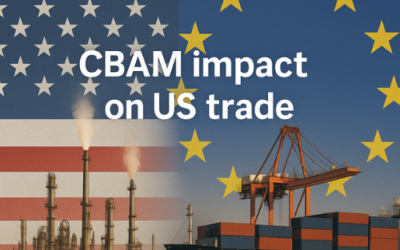CBAM Simulator
Explore real-world trade impacts of the EU CBAM using Sandbag’s data-based model.
The CBAM Simulator was developed to help stakeholders, especially from non-EU countries, understand the potential implications of the EU Carbon Border Adjustment Mechanism (CBAM) and explore how different national strategies may influence outcomes.
It is not designed to forecast specific costs, but rather to provide a flexible, interactive environment where users can simulate scenarios, apply filters, and compare the effects of policy choices on trade flows and carbon-related costs.
All simulations are based on 2023 trade volumes, assuming these remain constant over time.
The simulator is designed to illustrate possible evolutions of the CBAM and responses to it by third countries.
In the news
- Carbon Pulse, 16 October 2025: EU CBAM costs overstated by more than half, says think tank
- The Hindu (India), 16 October 2025: Indian iron and steel exporters face highest CBAM levy among EU trade partners
- Business Today (India), 17 October 2025: EU’s carbon border fees on Indian exports likely to be minor initially: Report
- Carbon Market Watch, 17 October 2025: EU’s CBAM will help Asian economies step up their carbon market ambitions, simulation reveals
- The Hunt (India), 20 October 2025: Relief for India on carbon border tax; initial financial impact limited, but uncertainty remains
- Indian PSU (India), 20 October 2025: EU’s Carbon Border Fees on Indian Exports Likely to Be Minor Initially: Sandbag Study
- Kallanish Commodities, 20 October 2025: Indian exporters face $386m EU CBAM cost: Sandbag
- World News (US) 20 October 2025: Indian exporters face $386m EU CBAM cost: Sandbag
- Steel Orbis, 20 October 2025: Sandbag: EU’s CBAM expected to have minimal impact on Indian exports
- Foresight News, 22 October 2025: 10 weeks to go until CBAM truth revealed — The Jolt podcast with Sam Morgan
Related Publications
Chemicals in the CBAM: Time to step up
Sandbag’s latest brief explains why the EU CBAM must be expanded to cover key chemical value chains. With chemicals and refinery products responsible for 30% of industry emissions, phased inclusion is critical to prevent carbon leakage and phase out free allowances.
The EU CBAM: a two-way street between the EU and Africa
Sandbag’s newly released CBAM Simulator allowed us to explore how the EU’s Carbon Border Adjustment Mechanism (CBAM) could impact African exporters — and how cleaner production and carbon pricing could turn a cost into a competitive edge.
CBAM impact on US trade: an analysis
Sandbag’s September 2025 research note explores the impact of the EU’s CBAM on US exports. It finds that even with expanded scope, the financial impact remains marginal — and US carbon pricing could turn net costs negative.

WHAT WE DO
TOOLS
PUBLICATIONS
NEWSLETTER
Mundo-b Matogné. Rue d’Edimbourg 26, Ixelles 1050 Belgium.
Sandbag is a not-for-profit (ASBL) organisation registered in Belgium under the number 0707.935.890.
EU transparency register no. 277895137794-73.
VAT: BE0707935890.



